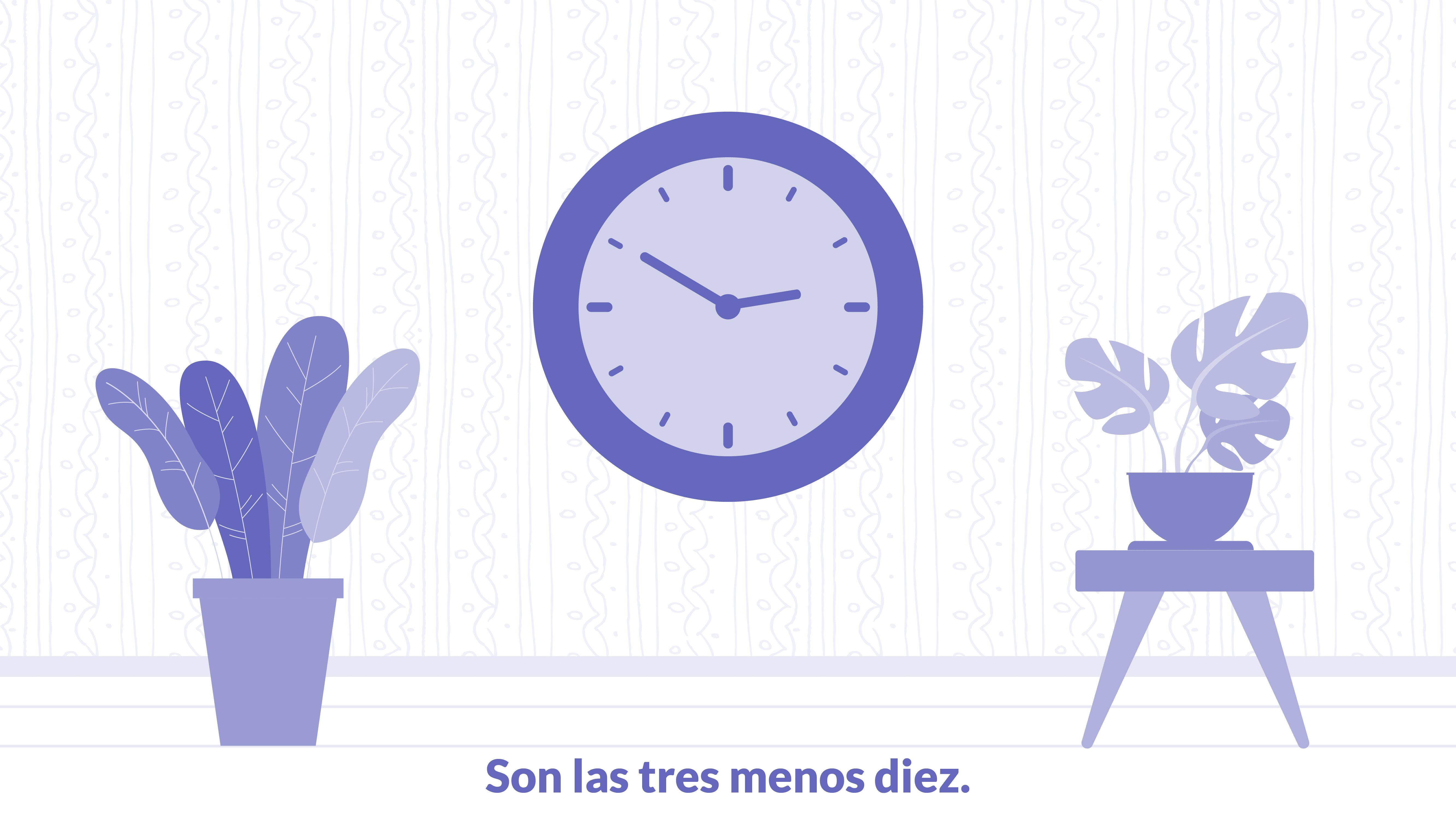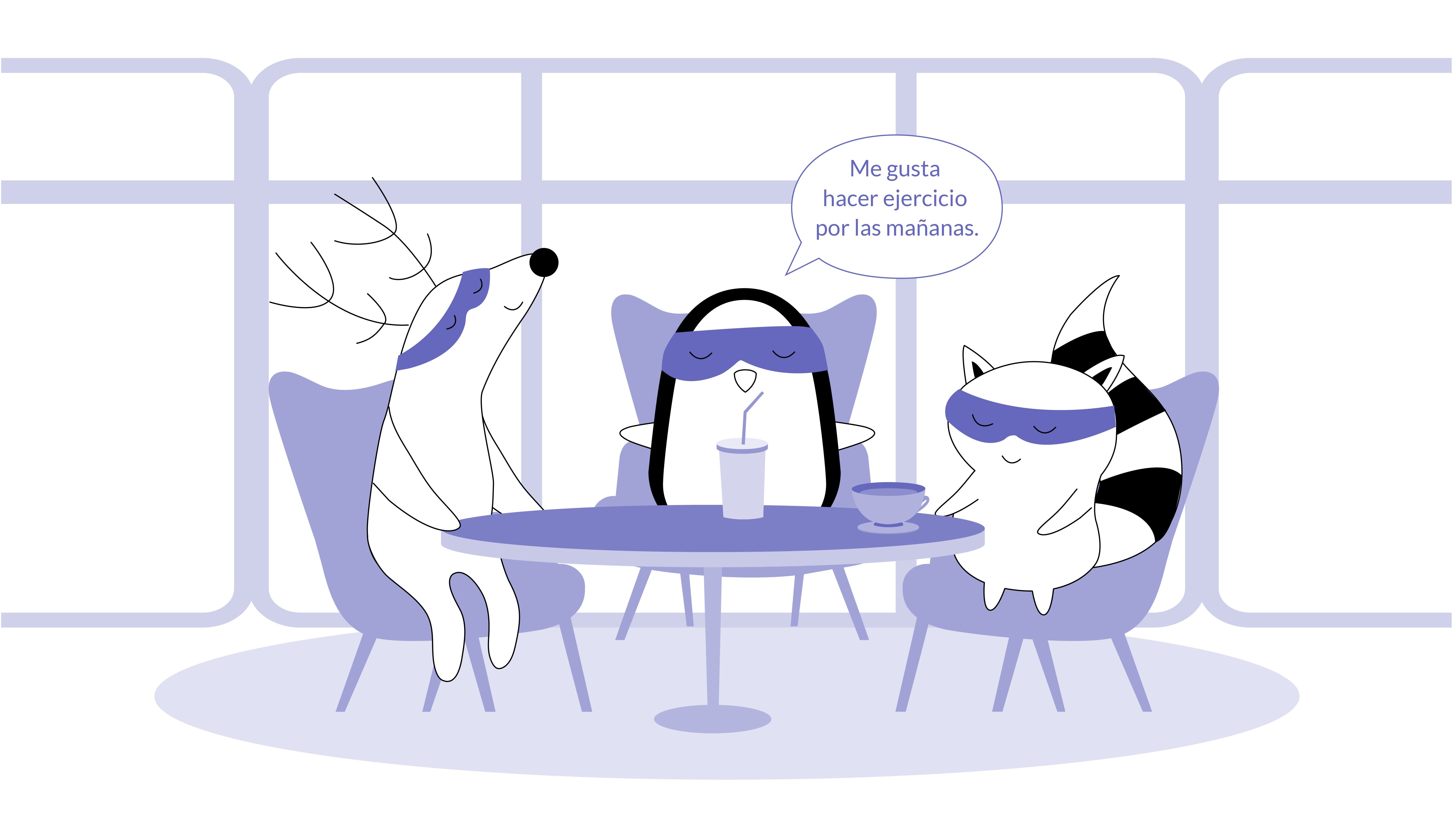
Mastering the art of telling time is an essential step in the journey of learning a new language. In this case, Spanish — one of the most widely spoken languages globally — offers an exciting linguistic adventure with its melodic intonation and expressive syntax.
This article will guide you, step by step, through the process of saying the time in Spanish. Whether you're planning a trip to a Spanish-speaking country, aiming to impress your friends with your linguistic prowess, or simply keen on expanding your language skills, this guide is for you.
Let's embark on this journey to enhance our cultural and linguistic knowledge together!
Learn Spanish with Langster
Basic Vocabulary to Talk About Time in Spanish
Learning how to tell the time in Spanish begins with familiarizing ourselves with some fundamental vocabulary. Understanding these basic words and phrases is the first step on your journey to mastering this essential skill.
Let's start with the basics. The word for time in Spanish is tiempo, but when referring to the time on a clock, we use the word hora. Keep this distinction in mind as you continue learning.
It's important to note that while English switches between AM and PM to indicate morning or afternoon, Spanish often uses a 24-hour clock system. This means you'll need to know words like trece (thirteen) for 1 PM, catorce (fourteen) for 2 PM, and so forth up to veinticuatro (twenty-four) for midnight.
For a quick reminder, check out our separate article on numbers in Spanish.
Minutes

Next, let's look at minutes. The word for a minute in Spanish is minuto. The numbers one through sixty are used to tell the minutes past the hour, just like in English.
For instance:
Spanish
English
quince
15 minutes past the hour
treinta
30 minutes
cuarenta y cinco
45 minutes
When speaking about specific times, Spanish speakers use y (and) to express minutes past the hour up to thirty minutes, and menos (minus) to express the minutes remaining to the next hour from thirty-one minutes onwards. For example:
Spanish
English
dos y quince
2:15
tres menos cuarto
2:45
Finally, to ask what time it is, you would say:
Spanish
English
¿Qué hora es?
What time is it?
To respond, you'd start your sentence with Son las... if the time is more than one, or Es la... if it is one o’clock.
Mastering this basic vocabulary is the first critical step in learning how to tell the time in Spanish. In the next section, we'll delve into the 24-hour clock and how it's used in Spanish-speaking countries.
| 1:00 | Es la una de la madrugada (AM) |
| 2:00 | Son las dos de la madrugada (AM) |
| 3:00 | Son las tres de la madrugada (AM) |
| 4:00 | Son las cuatro de la madrugada (AM) |
| 5:00 | Son las cinco de la madrugada (AM) |
| 6:00 | Son las seis de la mañana (AM) |
| 7:00 | Son las siete de la mañana (AM) |
| 8:00 | Son las ocho de la mañana (AM) |
| 9:00 | Son las nueve de la mañana (AM) |
| 10:00 | Son las diez de la noche (PM) |
| 11:00 | Son las once de la noche (PM) |
| 12:00 | Es el mediodía (PM) / Es la medianoche (AM) |
| 13:00 | Es la una de la tarde (PM) |
| 14:00 | Son las dos de la tarde (PM) |
| 15:00 | Son las tres de la tarde (PM) |
| 16:00 | Son las cuatro de la tarde (PM) |
| 17:00 | Son las cinco de la tarde (PM) |
| 18:00 | Son las seis de la tarde (PM) |
| 19:00 | Son las siete de la tarde (PM) |
| 20:00 | Son las ocho de la noche (PM) |
| 21:00 | Son las nueve de la noche (PM) |
| 22:00 | Son las diez de la noche (PM) |
| 23:00 | Son las once de la noche (PM) |
| 00:00 | Es la medianoche (AM) |
| 1:00 | Es la una de la madrugada (AM) |
| 2:00 | Son las dos de la madrugada (AM) |
| 3:00 | Son las tres de la madrugada (AM) |
| 4:00 | Son las cuatro de la madrugada (AM) |
| 5:00 | Son las cinco de la madrugada (AM) |
| 6:00 | Son las seis de la mañana (AM) |
| 7:00 | Son las siete de la mañana (AM) |
| 8:00 | Son las ocho de la mañana (AM) |
| 9:00 | Son las nueve de la mañana (AM) |
| 10:00 | Son las diez de la noche (PM) |
| 11:00 | Son las once de la noche (PM) |
| 12:00 | Es el mediodía (PM) / Es la medianoche (AM) |
| 13:00 | Es la una de la tarde (PM) |
| 14:00 | Son las dos de la tarde (PM) |
| 15:00 | Son las tres de la tarde (PM) |
| 16:00 | Son las cuatro de la tarde (PM) |
| 17:00 | Son las cinco de la tarde (PM) |
| 18:00 | Son las seis de la tarde (PM) |
| 19:00 | Son las siete de la tarde (PM) |
| 20:00 | Son las ocho de la noche (PM) |
| 21:00 | Son las nueve de la noche (PM) |
| 22:00 | Son las diez de la noche (PM) |
| 23:00 | Son las once de la noche (PM) |
| 00:00 | Es la medianoche (AM) |
Telling the Time in Spanish
Now that we're familiar with the basic vocabulary, let's move on to telling the time in Spanish. This involves combining the hours, minutes, and certain key phrases to form complete sentences.
On the Hour
Telling time on the hour in Spanish is simple. For example, to say, "It's one o'clock," you would say Es la una. For all other hours, you use Son las, followed by the number of the hour. For instance:
Spanish
English
Son las dos.
It's two o'clock.
Son las tres.
It's three o'clock
Quarter Past the Hour
To express a time that is a quarter past the hour, you use the word y (and) followed by cuarto (quarter). For example:
Spanish
English
Son las dos y cuarto.
It's 2:15.
Half Past the Hour
For half past the hour, you use y media.
Spanish
English
Son las dos y media.
It's 2:30.
Quarter to the Hour
When it's a quarter to the hour, you use menos cuarto after the upcoming hour. For instance:
Spanish
English
Son las tres menos cuarto.
It's 2:45.
Other Specific Times

For other specific times, you use y followed by the number of minutes if the minutes are less than 30, and menos followed by the number of minutes to the next hour if the minutes are more than 30. For example:
Spanish
English
Son las dos y diez.
It's 2:10
Son las tres menos diez.
It's 2:50
Remember, when the hour is one o'clock, you should use Es la una... instead of Son las.... For instance:
Spanish
English
Es la una y cuarto.
It's 1:15
Son las dos menos cuarto.
It's 1:45
By understanding these rules and practicing regularly, you'll soon find that telling the time in Spanish becomes second nature.
Asking and Giving the Time in Spanish
After mastering how to tell the time in Spanish, the next step is to learn how to ask and give the time. This knowledge is crucial for everyday conversations and practical situations like scheduling meetings or planning events.
Asking the Time
To ask someone, "What time is it?" in Spanish, you say ¿Qué hora es?. If you want to ask what time a specific event is, you could say ¿A qué hora es...? followed by the event. For example:
Spanish
English
¿A qué hora es la reunión?
What time is the meeting?
Giving the Time
When responding to someone asking the time, you start your sentence with Son las... if the time is more than one, or Es la... if it is one o’clock.
For example, if someone asks ¿Qué hora es? at two o'clock, you would say Son las dos. If it's one o'clock, you would say Es la una.
If the time is not on the hour, you should follow the rules mentioned in the previous section. For instance, if it's 2:30, you would respond with Son las dos y media. If it's 2:45, you would say Son las tres menos cuarto.
Other Important Phrases

In addition to asking and giving the exact time, it's also useful to know the following phrases:
Spanish
English
por la mañana
in the morning
por la tarde
in the afternoon
por la noche
at night
You may also hear de madrugada when referring to the early morning hours.
Here is how to incorporate those phrases into the conversation:
Spanish
English
La reunión es a las dos de la tarde.
The meeting is at two in the afternoon.
Me despierto a las siete de la mañana.
I wake up at seven in the morning.
By practicing these phrases and incorporating them into your daily conversations, you'll be able to ask and give the time in Spanish with ease.
Common Phrases Related to Time
Understanding time-related phrases can help you navigate everyday conversations in Spanish. Here are some common idiomatic expressions and phrases that you might find useful:
| Spanish Expression | English Equivalent | Example | Translation |
|---|---|---|---|
| A tiempo | On time | Llegué a tiempo para la reunión. | I arrived on time for the meeting. |
| Tarde | Late | Llegué tarde a la fiesta. | I arrived late to the party. |
| Temprano | Early | Me desperté temprano hoy. | I woke up early today. |
| De vez en cuando | Once in a while, occasionally | De vez en cuando, me gusta ir al cine. | Once in a while, I like to go to the movies. |
| A veces | Sometimes | A veces estudio hasta tarde en la noche. | Sometimes I study late into the night. |
| Siempre | Always | Siempre tomo café por la mañana. | I always drink coffee in the morning. |
| Nunca | Never | Nunca llego tarde al trabajo. | I never arrive late to work. |
| En punto | On the dot, exactly | La reunión comenzará a las tres en punto. | The meeting will start at three o'clock on the dot. |
| Dentro de poco | Soon | Dentro de poco, será la hora de cenar. | Soon, it will be dinner time. |
| Hace un rato | A while ago | Hace un rato que terminé mi tarea. | I finished my homework a while ago. |
| Spanish Expression | English Equivalent | Example | Translation |
|---|---|---|---|
| A tiempo | On time | Llegué a tiempo para la reunión. | I arrived on time for the meeting. |
| Tarde | Late | Llegué tarde a la fiesta. | I arrived late to the party. |
| Temprano | Early | Me desperté temprano hoy. | I woke up early today. |
| De vez en cuando | Once in a while, occasionally | De vez en cuando, me gusta ir al cine. | Once in a while, I like to go to the movies. |
| A veces | Sometimes | A veces estudio hasta tarde en la noche. | Sometimes I study late into the night. |
| Siempre | Always | Siempre tomo café por la mañana. | I always drink coffee in the morning. |
| Nunca | Never | Nunca llego tarde al trabajo. | I never arrive late to work. |
| En punto | On the dot, exactly | La reunión comenzará a las tres en punto. | The meeting will start at three o'clock on the dot. |
| Dentro de poco | Soon | Dentro de poco, será la hora de cenar. | Soon, it will be dinner time. |
| Hace un rato | A while ago | Hace un rato que terminé mi tarea. | I finished my homework a while ago. |
By incorporating these phrases into your vocabulary, you can enhance your fluency and sound more like a native Spanish speaker.
Conclusion

Mastering the concept of time in Spanish is a vital aspect of becoming fluent in the language. By learning how to tell, ask for, and give the time, along with understanding common time-related phrases, you can navigate a wide range of daily situations with ease. Regular practice is key to retaining this knowledge and improving your fluency.
To continue honing your Spanish skills, why not use an app like Langster? This interactive language learning platform provides an engaging way to practice and learn Spanish, including the concept of time. Its immersive environment, comprehensive lessons, and real-world scenarios make it an excellent resource for language learners of all levels.
So, keep practicing, and soon enough, telling time in Spanish will become second nature to you!
Learn Spanish with Langster









